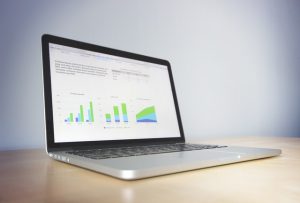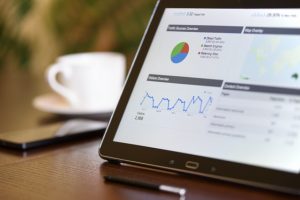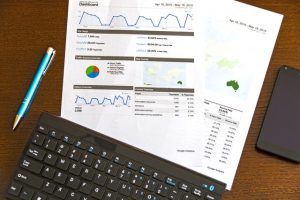A Student’s Guide To Data Analytics

There are many benefits to learning data analytics. According to IBM, by 2020 the amount of data science positions will grow by 28 percent. With the need for data analytics growing by the day, it doesn’t hurt to do a deeper dive.
Established corporations like Amazon, Google, and Facebook owe much of their success to data analytics. If you want to further explore its widespread effects, read on to learn more about data analytics.
Data Analytics: What Does It Mean?
Data analytics is the act of compiling a large set of information and studying it to find patterns. This process helps companies discover  and streamline what products are on shelves or racks and stock the in-demand items on your wishlist. Studying this data is how businesses create consumer profiles and find out what’s trending.
and streamline what products are on shelves or racks and stock the in-demand items on your wishlist. Studying this data is how businesses create consumer profiles and find out what’s trending.
Data analytics can also estimate how long most people spend shopping, whether it’s in-person or online, pinpointing what demographic groups tend to buy more (or less). Amazon’s business strategy relies on this process, constantly collecting, inspecting, and modeling massive amounts of data. But how can you break down what data analytics is? MIT Professor, Dimitris Bertsimas, defines it as:
“Analytics is the science of using data to build models that lead to better decisions that in turn add value to individuals.”
This means that data analytics isn’t solely an organization’s benefit; at its core, it services customers and looks out for their well-being. Now more than ever, gathering all this information has never been easier, with the majority of transactions occurring online.
Diving Into the Specifics
Data analytics is about more than just what you buy. It can also provide insight into age groups, regional popularity, and device usage. More research leads to stronger conclusions and, ultimately, higher success rates. There are three types of analytics that fall under data science, with each category performing specific tasks. Take a look at this helpful breakdown:
Descriptive Analytics
Descriptive analytics is perfect for when you just want to know how a business is performing and has performed in the past.  This type of process is perfect for businesses in particular situations. For example, monitoring a new product line that was just released six months ago can be tracked using this methodology.
This type of process is perfect for businesses in particular situations. For example, monitoring a new product line that was just released six months ago can be tracked using this methodology.
If an organization doesn’t know where it stands, how can it know if there’s a problem? Descriptive analytics will let you know how well it’s performing.
Predictive Analytics
Reflecting on past successes and failures is important. That’s why monitoring trends can help businesses identify when an important shift is about to happen. Analyzing these changes can predict what will shift and allow a business to make smart decisions. Great data analysts are proactive with the data they’re given, as realizing these trends can be critical to an organization.
Prescriptive Analytics
Prescriptive analytics consists of actionable reports, outlining what next steps a company should take. For example, if a certain product finds more success in one location than another, investing in advertising for that particular region may benefit the business more. Big data has the ability to make the future seem less cloudy.
Programming Languages That Can Help Analyze Data
Data analysts need to be knowledgeable in various programming languages to effectively decipher big data. Writing code may seem complicated, but the good news is that there are multiple languages available to help you. These include:
 Python
Python
From machine learning to network servers, Python has many different applications. Machine learning analyzes datasets to make new discoveries — even when you don’t specifically program it to. This versatile programming language is used by Google every day. The great thing about Python, though, is its user-friendliness, making it a great choice for beginners.
R
R is useful in machine learning and statistics. While it does possess a larger learning curve than Python, R is possibly the most prevalent programming language in the field. The debate over which of the two is the preferred language doesn’t matter as much if you are only sticking to data analytics.
SQL
If you are looking for a great database management programming language, look no further than Structured Query Language (SQL). SQL will help you with anything from running analytical queries to writing integration scripts. Being knowledgeable in SQL is a necessity when applying to well-known tech companies, like Apple.
Conclusion
No matter what coding language you choose to structure your data collection, data analytics will set the foundation a business needs in order to be successful. No matter how you use your knowledge, trust your skills as a data analyst.

 Live Chat
Live Chat